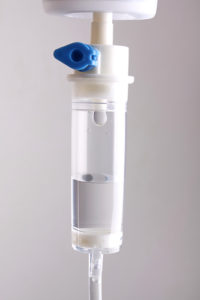Kawasaki Disease is a rare childhood illness and one of the leading causes of acquired heart disease in infants. The disease is typically  characterized by red rashes on the hands, feet, and body in children under the age of five. If left untreated, it can lead to dangerous heart conditions and, in the worst case scenario, myocardial infarction.
characterized by red rashes on the hands, feet, and body in children under the age of five. If left untreated, it can lead to dangerous heart conditions and, in the worst case scenario, myocardial infarction.
What is Kawasaki Disease?
The immune system attacks blood vessels in children, primarily of Asian descent. Antibodies attack medium-sized blood vessels (including arteries, veins, and capillaries), which leads to acute inflammation and a reduced flow of blood to the heart and valve muscles.
When this happens, the heart may not pump as efficiently, which, in turn, increases the risk of myocardial infarction, arrhythmias, and heart failure. Infants are at risk of aneurysms developing in enlarged blood vessels and clots in narrow ones.
The cause of Kawasaki Disease is unknown, though it’s believed to have a strong genetic component. Untreated symptoms pass through a series of three stages and last around two weeks before the child returns to normal.
Typical symptoms present themselves as a red rash on the hands, feet, and body along with a high fever (above 102.2 F) that lasts for more than five days. Conjunctivitis or red eye, red lips, and a swollen strawberry-colored tongue are typical in the early stages. You may also find swollen lymph nodes in the neck and swelling around the rashes in the hands and feet.
The second phase starts after a few days to a week. Parents often notice the skin peeling in large sheets around the fingers and toes. Vomiting and diarrhea along with abdominal and joint pain are common.
The final phase sees a reduction in the rash, peeling, and swelling and the symptoms slowly dissipate as the child returns to normal. Kawasaki Disease doesn’t usually present itself again and responds well to treatment. However, heart complications may persist if the disease is untreated.
Parents should consult a doctor if they notice a high fever for more than a few days along with the typical rash and strawberry tongue.
Risk Factors
The exact cause of Kawasaki Disease is unknown. Common risk factors appear to be children between the age of one and five of Asian descent, and boys have a slightly higher risk than girls. However, 25% of cases involve infants younger than one and over the age of five. These cases are more likely to present an incomplete set of symptoms which is harder to identify and diagnose correctly.
It’s very likely that Kawasaki Disease has a strong genetic and environmental component. Experts also claim the prevalence varies between different seasons.
Treating Kawasaki Disease with IVIG
Diagnosing and treating Kawasaki Disease as early as possible is imperative to the health of the child. The longer the inflammation continues, the higher the risk of severe damage to blood vessels, heart muscles, and further complications. It is therefore of vital importance to get a correct diagnosis and begin treatment as early as possible. The purpose of treatment is to reduce the inflammation that can cause long-lasting damage to the circulatory system.
Typical treatment is a dose of aspirin and injections of IVIG. Aspirin reduces the risk of blood clots, and IVIG lowers inflammation. The latter are antibodies that are injected into the bloodstream to counter the inflammation, and has a high success rate.
Infants who undergo IVIG treatment typically experience coronary aneurysms in 1-5% of cases compared to 25% or greater in untreated patients.
Children may need to stay in the hospital under close observation by a team of cardiologists to ensure the treatment is reducing the inflammation. Maximum benefits from IVIG happen in the first ten days of manifestation. This is why it is so important for parents to identify symptoms and contact a medical professional as soon as possible.
Severe cases of Kawasaki Disease are extremely rare and are typically associated with no measurable response to the IVIG treatment. In cases like this, doctors will administer a course of corticosteroid therapy. Unfortunately, those who fail to respond to the IVIG are at a much higher risk of heart complications.
The vast majority of children fully recover and have no long-lasting effects after receiving early treatment. Parents should bring their child to be monitored after IVIG to ensure the cardiovascular system hasn’t suffered any irreversible damage.
Things to Remember
- Kawasaki Disease usually presents itself in children of Asian descent between the ages of one and five.
- The cardinal symptoms are a high fever with rashes on the hands, feet, and body with a swollen
- Early diagnosis allows early treatment, which reduces the risk of complications and heart disease.
- Proper treatment to reduce the inflammation, if administered in the first ten days, can mitigate the damage caused by Kawasaki Disease in most patients.

 infusion centers continues to grow, many physicians are clamoring to find the best company to collaborate with amid a seemingly endless list of options. Finding the best company to help you launch and sustain a successful IV infusion center requires research and careful vetting. The first step is identifying the
infusion centers continues to grow, many physicians are clamoring to find the best company to collaborate with amid a seemingly endless list of options. Finding the best company to help you launch and sustain a successful IV infusion center requires research and careful vetting. The first step is identifying the  physician who places a high premium on quality patient care coupled with an increased revenue stream, you may be considering the addition of an infusion center. While an infusion center is often a viable solution, opening one is no small feat. Below is a seven-pronged approach to crafting an infusion center business plan designed to set you up for success.
physician who places a high premium on quality patient care coupled with an increased revenue stream, you may be considering the addition of an infusion center. While an infusion center is often a viable solution, opening one is no small feat. Below is a seven-pronged approach to crafting an infusion center business plan designed to set you up for success. looking for a competitive edge in the ever-changing landscape of patient care, you may be considering the addition of an infusion center to your practice or medical facility.
looking for a competitive edge in the ever-changing landscape of patient care, you may be considering the addition of an infusion center to your practice or medical facility.